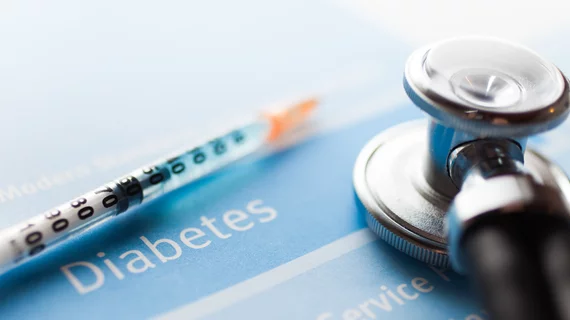Dapagliflozin lowers CV risk in type 2 diabetics
The blood sugar drug dapagliflozin was declared noninferior to placebo in the recent DECLARE-TIMI 58 trial, and while the medication failed to lower rates of major adverse cardiovascular events (MACE) in subjects, it did reduce rates of CV-related death and hospitalizations for heart failure.
Brigham and Women’s Hospital associate professor Stephen D. Wiviott, MD, led the study group, whose findings were published in the New England Journal of Medicine Jan. 24. The researchers said other selective sodium-glucose cotransporter 2 (SGLT2) inhibitors have shown favorable cardiovascular effects in previous trials, but the safety profile of dapagliflozin is unknown.
“The high risk of heart failure in patients with diabetes is independent of coronary disease, and limited data are available to guide treatments for the prevention of heart failure,” Wiviott and co-authors wrote in NEJM. “As a result of this intersection of diabetes, atherosclerotic cardiovascular disease (ASCVD) and heart failure, the importance of determining diabetes therapies that are not only safe but also effective in reducing cardiovascular risk is paramount.”
DECLARE-TIMI (Dapagliflozin Effect on Cardiovascular Events-Thrombolysis in Myocardial Infarction) 58 evaluated the effects of dapagliflozin on cardiovascular and renal outcomes in 17,160 type 2 diabetes patients who either had or were at risk for developing ASCVD. The trial’s primary safety outcome was MACE, defined as CV death, MI or ischemic stroke.
Patients were randomized to either dapagliflozin or a placebo drug, and after four years of follow-up both the test and control groups saw similar rates of MACE (8.8 percent in the dapagliflozin group compared to 9.4 percent in the placebo group). Dapagliflozin users saw a lower rate of cardiovascular death or hospitalization for heart failure (4.9 percent vs. 5.8 percent), which reflected a 27 percent lower risk of heart failure hospitalization in the test cohort.
“The lower rate of cardiovascular death or hospitalization for heart failure in the dapagliflozin group than in the placebo group was consistent across multiple subgroups, which shows that dapagliflozin prevented cardiovascular events, particularly hospitalization for heart failure, in a broad range of patients, regardless of a history of ASCVD or heart failure,” Wiviott and colleagues wrote. “The majority of patients did not have a history of heart failure, so the prevention of new clinical heart failure is notable.”
The authors said there were fewer renal events—defined as new end-stage renal disease, a sharp drop in glomerular filtration rate or death from renal or CV causes—in the test group, but diabetic ketoacidosis was more common with dapagliflozin than placebo (0.3 percent vs. 0.1 percent). The rate of serious genital infections was also higher in the dapagliflozin cohort—0.9 percent compared to the control group’s 0.1 percent.
“The DECLARE-TIMI 58 trial showed that the SGLT2 inhibitor dapagliflozin was noninferior to placebo with respect to the primary safety outcome of MACE,” Wiviott et al. said. “Dapagliflozin did not result in a significantly lower rate of MACE, but in a broad population of patients with type 2 diabetes it did result in a significantly lower rate of cardiovascular death or hospitalization for heart failure than placebo, with additional findings supporting a possible lower rate of adverse renal outcomes.”

